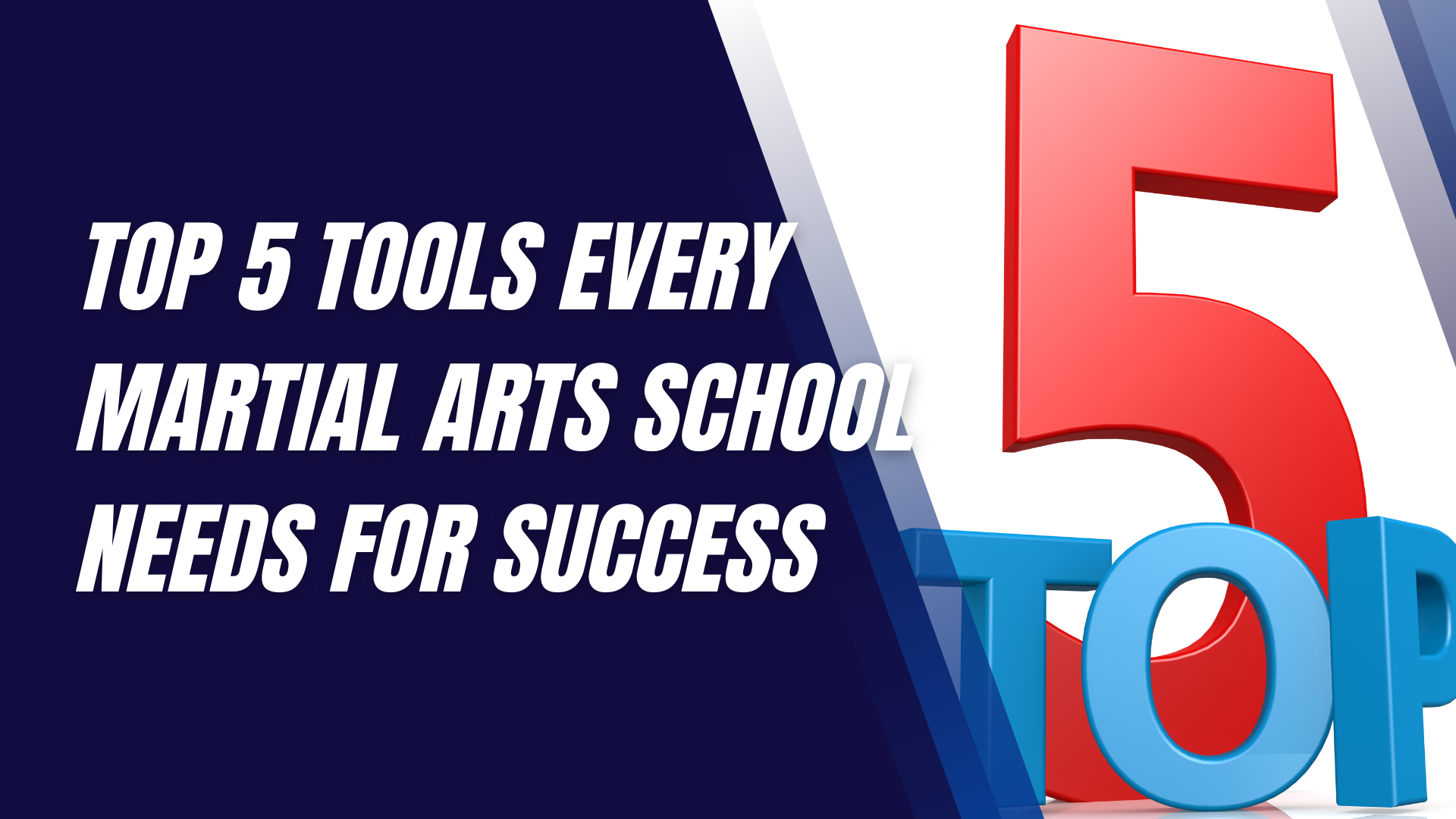Why Offering Kids' Martial Arts Classes Can Boost Your Revenue
In today’s fast-paced world, parents are constantly seeking activities that can enrich their children’s lives, both mentally and physically.
Among these activities, martial arts have steadily gained popularity due to their unique combination of physical fitness, mental discipline, and character development. Offering kids’ martial arts classes is not only a great way to positively impact your community, but it also opens up new revenue streams for business owners in the fitness and wellness industries. This article delves into why adding kids’ martial arts classes to your offerings can significantly boost your revenue.
Understanding the Benefits of Kids' Martial Arts Programs
Martial arts programs for kids provide a well-rounded set of benefits that appeal to parents, making these classes an attractive option for families.
Physical Fitness and Coordination
Kids’ martial arts training emphasizes physical fitness, offering children an opportunity to develop their strength, agility, and coordination. With childhood obesity on the rise, parents are looking for structured activities that help their children stay fit. Martial arts provide a fun yet challenging way to engage kids in regular physical activity, making it a great alternative to traditional sports.
Improving Focus and Discipline
Parents appreciate how martial arts classes teach focus and discipline—two essential life skills that benefit children beyond the dojo. Whether it’s following instructions or mastering a specific technique, martial arts instills discipline through structured lessons and repeated practice. This not only improves behavior in school but also creates a lifelong appreciation for hard work and perseverance.
Boosting Self-Confidence and Self-Esteem
Martial arts training is a confidence-building experience. As kids progress through belt levels and master new techniques, they gain a sense of accomplishment and pride in their achievements. This boost in self-esteem is a key reason why parents invest in these programs, making martial arts an ideal offering for children who might struggle with confidence in other areas of life.
Market Trends Favoring Martial Arts for Kids
Several market trends indicate that now is the perfect time to offer martial arts classes specifically tailored for children.
Rising Popularity Among Parents
Parents are increasingly prioritizing activities that promote not only physical health but also mental and emotional well-being. Martial arts, with its holistic approach to developing both the mind and body, has captured the attention of parents who are looking for more than just a physical workout for their children. With increased awareness of the positive impacts of martial arts, parents are more willing to enroll their children in such programs.
Increased Awareness of Health and Fitness
The global emphasis on health and fitness has pushed more families to seek out structured exercise programs for their children. Martial arts not only cater to this need but also offer long-term growth and progression, ensuring that children remain engaged over extended periods.
COVID-19's Impact on Demand for Structured Activities
The pandemic has heightened the demand for organized activities that promote physical and mental well-being. As families seek to reintroduce their children to structured environments, martial arts schools can fulfill this need by offering classes that allow children to socialize, learn, and grow in a safe, controlled environment.
Revenue Opportunities in Kids' Martial Arts Classes
Kids’ martial arts classes can open up several lucrative revenue streams beyond just the monthly class fees.
Monthly Membership Plans
One of the most common revenue models for martial arts schools is the use of monthly membership plans. By offering tiered pricing options based on the number of classes attended, schools can create a steady and predictable income flow. These memberships not only encourage regular attendance but also foster long-term commitment from families.
Belt Advancement and Testing Fees
Progress in martial arts is often marked by belt advancement, and parents are typically willing to pay for their child’s participation in testing and graduation ceremonies. These fees can be a significant source of additional income, especially if you build a sense of occasion around the events, making them milestones that families want to celebrate.
Merchandising Opportunities (Uniforms, Gear, Accessories)
Many martial arts schools sell uniforms, belts, and training gear, which can also be a significant revenue driver. You can offer branded items, which not only helps create a sense of belonging among your students but also markets your business when kids wear your gear outside of class.
Specialized Camps and Workshops
Offering themed martial arts camps during school holidays or workshops focusing on specific skills (e.g., self-defense, sparring techniques) can be a great way to generate additional income. These short-term programs attract both existing members and new participants, providing a valuable opportunity to upsell your regular classes.
Expanding Clientele with Kids' Classes
Kids’ martial arts classes don’t just benefit the children enrolled—they also provide an excellent opportunity to expand your clientele.
Attracting Parents Through Children’s Enrollment
When children enroll in martial arts classes, their parents become potential clients as well. Many martial arts schools successfully attract parents to sign up for adult programs once they see the positive impact the classes have on their children. This dual enrollment strategy can lead to a larger, more diverse customer base.
Family Discounts and Group Classes
Offering family packages or discounts can encourage multiple members of the same family to join your programs. Group martial arts classes that cater to parents and children alike are an effective way to build community and increase participation.
Maximizing Revenue with Kids' Birthday Parties and Events
One often-overlooked revenue stream in martial arts schools is the opportunity to host special events like birthday parties.
Hosting Martial Arts-Themed Birthday Parties
Many martial arts schools have found success in offering martial arts-themed birthday parties. These parties not only generate revenue but also serve as a fun introduction to martial arts for the birthday child’s friends, who may be potential new students.
Special Demonstration Events for Parents
Hosting demonstration events where kids can show off the skills they’ve learned in class is a great way to keep parents engaged and foster a sense of community. These events can be monetized by charging for participation or offering optional video/photo packages.
Building Community Engagement
Local community involvement can significantly boost the visibility of your martial arts school, especially when you position your programs as beneficial for children.
Involving Local Schools and Community Centers
Partnering with local schools to offer after-school programs or workshops is a great way to introduce martial arts to a broader audience. By aligning with community centers, you can make your programs accessible to more families, creating further brand recognition.
Promoting Anti-Bullying and Self-Defense Workshops
Anti-bullying programs and self-defense workshops for kids are highly marketable to parents. These events not only generate additional revenue but also establish your school as a community leader in children’s safety and well-being.
Marketing Strategies for Kids' Martial Arts Classes
Effectively marketing your kids' martial arts classes is crucial for attracting new students and maintaining steady growth.
Using Social Media to Reach Parents
Parents are often found scrolling through social media platforms, especially those looking for local activities for their children. Facebook and Instagram are excellent platforms for promoting your classes, sharing success stories, and showcasing the benefits of martial arts for kids. Posting videos of class highlights, testimonials from satisfied parents, and special promotions can drive interest in your programs.
Offering Free Trials and Family Events
Free trials are a tried-and-true method for bringing in new students. Organizing family-friendly events where parents can observe or participate in classes alongside their children can also help convince hesitant parents to commit to a program.
Leverage Testimonials and Success Stories
Parents trust other parents’ experiences, so using testimonials and success stories in your marketing efforts can make a big impact. Featuring stories of how martial arts transformed the lives of children in terms of behavior, focus, or confidence can help prospective clients relate and make a decision to enroll.
Reducing Churn: Retaining Kids in Martial Arts Programs
Retention is just as important as attracting new students when it comes to maintaining revenue.
Developing Long-Term Programs for Skill Progression
By designing long-term skill progression programs, you can keep children engaged and invested in their martial arts training. Creating a clear path from beginner to advanced levels motivates children to stay involved, especially when paired with rewards like belts, badges, or certificates.
Incentive Programs for Attendance and Loyalty
Reward programs for consistent attendance or loyalty can help reduce churn. Offering incentives such as recognition boards, achievement badges, or discounts on future services for long-term participation encourages students to stick with their training over time.
Enhancing Revenue with Additional Services
Expanding your services beyond just kids’ classes can further boost your revenue.
Private Lessons for Advanced Skills
Some parents are willing to pay extra for private or semi-private lessons, particularly if their child is preparing for a competition or wants to focus on specific areas of improvement. Offering tailored training programs can cater to these needs, providing a premium service at a higher cost.
Fitness and Conditioning Classes for Parents
Offering fitness or conditioning classes for parents while their children are in martial arts class can turn a family trip to the dojo into a shared experience. This dual-service approach increases revenue while also building a more inclusive community.
Collaboration with Schools and Local Organizations
Forming partnerships with local schools, PTAs, and organizations can create a mutually beneficial relationship that draws more students to your martial arts school.
Creating After-School Programs
Many parents are looking for constructive after-school programs for their kids. Offering martial arts classes as part of an after-school curriculum can be a great way to introduce children to the sport while also creating a steady stream of students.
Working with PTAs and Local Authorities
Collaborating with Parent-Teacher Associations (PTAs) or local government bodies can help you secure contracts for teaching martial arts in public spaces or community centers, creating consistent, reliable income.
Leveraging Technology to Improve Enrollment and Retention
Technology can simplify operations and enhance the customer experience.
Online Scheduling and Payments
Implementing online scheduling and payment systems makes it easier for busy parents to manage their child’s martial arts class enrollment. Streamlined processes increase customer satisfaction, reduce no-shows, and improve cash flow.
Tracking Student Progress with Apps
Apps that allow parents to track their child's progress or receive notifications about upcoming belt tests and events can enhance the parent experience and keep students engaged in the program.
Common Challenges and How to Overcome Them
While the benefits of offering kids' martial arts classes are clear, there are also challenges.
Dealing with Competition from Other Programs
With the growing popularity of martial arts, competition is inevitable. To stand out, focus on what makes your program unique whether it’s a particular teaching philosophy, a family-oriented atmosphere, or a specific martial arts style.
Overcoming Parental Hesitations
Some parents may have concerns about martial arts being too aggressive or risky for young children. Address these concerns by highlighting the safety measures you have in place and emphasizing the non-violent, discipline-focused aspects of martial arts.
Frequently Asked Questions
FAQ 1: What age should kids start martial arts?
Children can typically begin martial arts classes as young as 3 or 4 years old, depending on their maturity and ability to follow instructions.
FAQ 2: What are the most popular martial arts styles for kids?
Popular martial arts styles for kids include karate, taekwondo, Brazilian jiu-jitsu, and kung fu, with each offering unique benefits in terms of physical and mental development.
FAQ 3: How much does it cost to run a martial arts class for kids?
Costs vary based on location, but typical expenses include rent, instructor salaries, equipment, insurance, and marketing. Schools can offset these costs with tuition fees and additional revenue streams like merchandise and special events.
FAQ 4: How do I keep kids engaged in long-term programs?
To keep kids engaged, focus on providing a clear progression system, offer regular feedback, and celebrate achievements with belt ceremonies and rewards.
FAQ 5: Can kids with special needs join martial arts classes?
Yes, many martial arts schools offer adaptive programs for children with special needs, focusing on inclusivity and personalized training.
FAQ 6: How can I market my martial arts classes effectively?
Effective marketing strategies include leveraging social media, offering free trial classes, using testimonials, and partnering with local schools and community organizations.
Final Thoughts
Offering kids’ martial arts classes presents a significant opportunity for revenue growth. By tapping into the increasing demand for structured, health-focused children’s activities, martial arts schools can attract a steady stream of new students.
With a variety of revenue streams—from membership fees and merchandise sales to special events and camps—this expansion offers a sustainable way to grow your business while fostering a positive community impact.
Interested in trying a martial arts class? Find an affiliated academy anywhere in the country by clicking here.
Have your own martial arts program? Get to know more about what we have to offer at Ground Standard Agency for helping martial arts businesses grow.
Email us at info@groundstandard.com, or call and text us at (732) 907-8920 today to learn how to start growing your own academy, school, dojo, or gym with us as well.
Share this article












